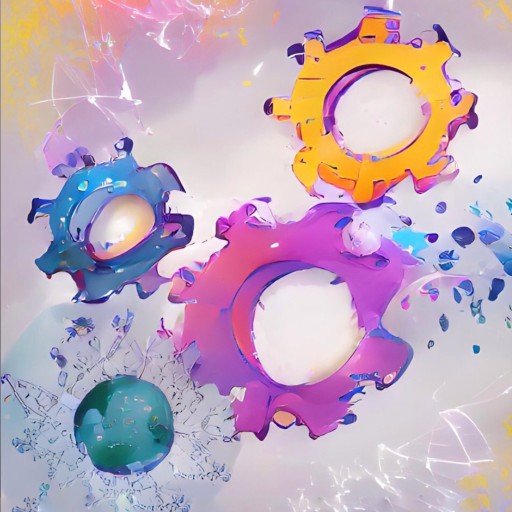第1回では、第3世代の暗号通貨は、Scalability、Interoperability、Sustainabilityの問題を解決することであることを学びました。ホワイトボードビデオの2番目の抜粋では、チャールズがスケーラビリティに対するカルダノの解決策を説明しています:。
スケーラビリティには様々な意味がありますが、暗号通貨の観点からは、3つの方法で考えることができます。
1)1)1秒あたりのトランザクション数(TPS)。
よく「ビットコインは1秒間に7回のトランザクションがある」とか「イーサリアムは1秒間に10回や20回のトランザクションがある」という話を聞きますが、これは単純に「1秒間に何回のトランザクションがあるか」という概念です。これは、ある有限の時間内にブロックチェーン上でどれだけのトランザクションを処理できるかを示す概念である。 編集部注:カルダノは250TPSを達成しており、この数字をもっと大きくする計画があります!]。
ウロボロスの紹介
TPSに対応するため、私たちは証明可能な安全性を持つプルーフ・オブ・ステーク・プロトコル「ウロボロス」の査読付きホワイトペーパーを開発しました。**Ouroborosは、暗号通貨分野で最も効率的なコンセンサスプロトコルの1つであり、非常に厳密な暗号学的方法で安全性が証明された最初のものです。 ** ウロボロスの魅力は、モジュール方式で設計されていること、そして、そのDNAに未来志向であることが挙げられます。
ウロボロスの仕組みはこうです。
- まず、世界をエポックに分割します。[現在、カルダノの1エポックは5日です。]
- 1つのエポック内で、トークンの分布を調べ、乱数のソースから「スロットリーダー」を作るための選挙を行う。
- スロットリーダーは、機能的にはビットコインで採掘者が「ブロックを獲得」するときと同じことをする。違いは、ビットコインのような大規模な計算資源を必要としないことである。その結果、同様のセキュリティ保証があるにもかかわらず、このシステムはかなり安価に運用できます。これは大きな進歩です
ウロボロスプロトコルの利点は、以下の通りです。
–> スロットリーダーは、1つのブロックと1つのチェーンだけを維持する必要はありません。ブロックの構築コストが非常に低いため、他のブロックやチェーンを維持することができるのです。単一チェーンではなく、様々なブロックチェーンのコンセンサスを語ることができるようになったのです。
–>エポックとエポックを並列に走らせるのではなく、エポックを並列に走らせ、それに応じてトランザクションを分割するシステムをウロボロスで開発する予定です。これはどういうことかというと、ユーザーが増え、ユーザーの能力が上がれば、これらのスロットリーダーがより多くの種類のブロックチェーンを維持し、ブロックチェーンのトランザクション処理も並行して実行できるようになるのです。これは大きな進歩です
–>ウロボロスには、理論的な基盤だけでなく、実装の面でも非常に厳格なセキュリティ基準があります。私たちがプロトコルの新しい機能を開発すれば、その機能も安全なものになります。これは他のシステムとは対照的で、ケースバイケースでこれらを証明しなければならず、場合によっては安全に成長するためにシステムに大きな修正を加えなければならないこともあるのです。
–>ウロボロスは、2018年中に量子耐性を獲得する予定です。スロットリーダーがブロックに署名する際には、量子抵抗性の署名方式を使うことになるでしょう。 これによって、さらに将来性のあるシステムを手に入れることができるのです。[編集部注量子コンピュータは、未来の強力なコンピュータであり、暗号鍵を破ることができるかもしれないと私たちは想像しています。現時点では、この脅威は仮説に過ぎませんが、今から対策を練ることは重要な先見性です!]。
これらの機能は、このようなスケーラビリティの問題を解決するものです。
「ビットコインの現在のコストである30万ドル/時間のコストがかからないネットワークを維持する方法をどのように構築するか」 [編集部注:チャールズ・ホスキンソンは2017年にこの講演を行いました。ビットコインのエネルギーコストは、その後4倍以上になっています。ビットコインを動かすために必要なエネルギーは、アルゼンチン全土のそれを超えています。https://www.nytimes.com/interactive/2021/09/03/climate/bitcoin-carbon-footprint-electricity.html]。
“How do we build a system that allows we go parallel and maintain multiple chains concurrently? “「どのようにすれば、並行して複数のチェーンを維持できるシステムを構築できるのか?
これらの問いに答えることが、ウロボロスの核心である。
**2)帯域幅
1秒あたりのトランザクション数は重要ですが、それだけにとどまりません。 トランザクションはデータを運ぶものであり、トランザクションが増えれば増えるほど、より多くのネットワーク資源を必要とします。これが帯域幅の概念です。システムの規模が大きくなり、ユーザーが数百万人、数十億人となった場合、システムを流れるすべてのデータをサポートするために、1秒間に数百ギガバイトの帯域幅を必要とする可能性があります。このようなボリュームは、企業の世界ではよくあることですが、ピアツーピアの世界ではそうではありません。
RINAの紹介
ネットワークが毎秒数百トランザクションから毎秒数十万トランザクションに成長すると、均質なネットワーク・トポロジーを維持することができなくなります。言い換えれば、すべてのノードがすべてのメッセージを関連付けなければならないような状況はありえません。私たちが成長すればするほど、そのような能力を持たないノードが出てくるでしょう。そこで、私たちはRINAという新しいタイプの技術に着目しています。これはRecursive Internetwork Architectureの略です。RINAは、ボストン大学のJohn Dayが考案した、巧みな工学原理を用いた新しいネットワーク構築方法です。 RINAの目標は、プライバシー、透明性、拡張性を備えた異種ネットワークを構築することです。 RINAは、Cardanoの成長に合わせて調整・設定する方法を提供する大きな前進です。
**3)データスケール
ブロックチェーンは物を保存します - うまくいけば永遠に!トランザクションを入れるたびに、それはログに終わります。だから、トランザクションが増えれば増えるほど、より多くのデータが必要になる。その結果、ブロックチェーンはメガバイトからギガバイト、テラバイト、ペタバイト…そしてエクサバイトにまで成長する可能性があります。中央集中型のデータセンターを持つ)大企業の世界では問題ありませんが、各ノードがブロックチェーンのコピーを持つことにセキュリティモデルを依存する複製システムについて話すとなると?このようなデータ量は、消費者向けハードウェア機器(一般的な家庭用コンピュータなど)では実現不可能なものです。
カルダノは、これらの問題を非常にエレガントな方法で解決しようとしている。カルダノでは、ネットワークに人を加えれば、当然ながら1秒あたりのトランザクションが増えます。また、より多くのネットワークリソースも自然に得られる。 最終的には、より多くの全体的なデータストレージを手に入れることができます。すべて、私たちのセキュリティ・モデルを犠牲にすることなく、です
刈り込み、分割、サイドチェインの導入
Data Scaling問題に対処するために、私たちが認識しなければならないのは、すべての人がすべてのデータを必要とするわけではない、ということです。アリスがボブに送るトランザクションは、ジェーンとビルには必ずしも関係ない。これらの人々が受け取るトークンが正当で正しいものであることを知ることができるという文脈からだけ、関連性があるのです。これに対処するための技術には次のようなものがある。
1)枝刈り: 一部の人々が見ることができるものを、知的ケースバイケースで制限する。
**2)Partitioning:**あるユーザーはブロックチェーンの完全なコピーを持っておらず、代わりにチャンクだけを持っているかもしれません。
**3)サイドチェーン:**ブロックチェーンの圧縮表現を[セカンダリーチェーンに]作成し、チェーン間のトランザクションを変換する。
学術的な厳密さ - カルダノの差別化要因。
新しい暗号を開発する際に最も重要なことの1つは、非常に厳密な、ピアレビューされた方法で開発されていることを確認することです。 Ouroborosは、「Crypto 17」[第37回学術暗号会議]に採択され、私たちのチームが発表しました。このプロトコルの将来のバージョンは、より厳格な査読を受け続け、システムの概念設計が正しいという高い確証を得ることができます。また、「サイドカルキュラス」という機械的に理解可能な形式的モデリング言語を使って、「ウロボロス」の形式的な仕様のモデル化も行っています。最終的には、githubリポジトリにあるHaskellのコードに接続し、プロトコルを正しく実装したことを実際に示すことができるようにする予定です。これはブロックチェーンの世界には存在しない規格であり、私たちはそれを最初に実現することにとても興奮しています。
カルダノプロジェクトの目標は、すべての疑問を厳密な方法で研究し、新しいブロックチェーンアーキテクチャを考え出すことです。そのソリューションは、人々がより少ない量のデータを持ちながら、取引が正しいという同レベルの保証を得ることを可能にしなければなりません。幸いなことに、TPSや帯域幅のニーズは急速に高まる一方で、データストレージはまだ比較的安価で入手しやすいということがあります。 ですから、Cardnoのデータスケーリング面は、それほど緊急に解決する必要はないだろうと考えています。これらの問題についての研究は、エジンバラ大学で行われています。2019年末までには、この問題に対する完全な解決策が得られると信じています。





No comments yet…